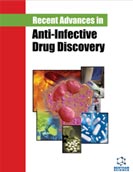
Abstract
Background and Objective: Integrase strand transfer inhibitors (INSTIs) are currently the standard of practice for first-line HIV therapy for most patients. We evaluated the mutations associated with INSTI resistance in naive HIV-1 infected patients and treated them with antiretrovirals (ART).
Methods: The study, conducted in the 2018 - 2020 period, included 50 ART-naïve patients, 69 INSTI free ART-experienced patients, and 82 INSTI-experienced patients. INSTI resistance mutations were interpreted using the Stanford University HIVdb Program algorithm.
Results: INSTI resistance was not detected in ART naïve patients. At least one INSTI resistance mutation was detected in 10% of the INSTI-free patients and 29% of the INSTI-treated patients. Major INSTI-mutations E138K, Y143R, S147G, Q148R, N155H, and E157Q were found in raltegravir. Additional mutations, E92Q, E138K, G140A, S147G, and Q148R were found in elvitegravir; E192Q, E138K/T, G140A/S, S147G, Q148H/R, N155H, E157Q were found in dolutegravir (DTG) experienced patients. According to all drug classes, drug resistance mutation prevalences were determined at the rate of 60%, 46%, and 46% in the RAL, EVG, and DTG groups, respectively.
Conclusion: Our findings provide data for treatment and resistance management of INSTIs and may provide feedback for INSTIs resistance surveillance consensus-building efforts. In viral rebound under INSTI treatment, INSTI-resistant mutations follow typical INSTI resistance pathways and high resistance rates. INSTI resistance genotypic analysis should be considered before any DTG-based regimes can be initiated in the future, and reduced DTG susceptibility should be carefully monitored and investigated.
Keywords: HIV, drug resistance, INSTI, raltegravir, elvitegravir, dolutegravir.
Graphical Abstract
[http://dx.doi.org/10.1001/jama.2020.17025] [PMID: 33052386]
[http://dx.doi.org/10.1016/0092-8674(91)90297-C] [PMID: 1760846]
[http://dx.doi.org/10.1007/s40265-015-0361-6] [PMID: 25698454]
[http://dx.doi.org/10.1128/AAC.01474-16] [PMID: 27645238]
[http://dx.doi.org/10.1080/13543776.2020.1717470] [PMID: 31944142]
[http://dx.doi.org/10.1002/phar.2246] [PMID: 30860610]
[http://dx.doi.org/10.1186/s12977-017-0360-7] [PMID: 28583191]
[http://dx.doi.org/10.2174/1570162X18666200427223823] [PMID: 32342820]
[http://dx.doi.org/10.1093/jac/dkq326] [PMID: 20817922]
[http://dx.doi.org/10.1080/15284336.2016.1153303] [PMID: 27125365]
[http://dx.doi.org/10.1371/journal.pone.0004724] [PMID: 19266092]
[http://dx.doi.org/10.1093/jac/dkz417] [PMID: 31617907]
[http://dx.doi.org/10.7448/IAS.15.6.18112]
[http://dx.doi.org/10.1093/jac/dkv202] [PMID: 26188038]
[http://dx.doi.org/10.1093/jac/dkv243] [PMID: 26311843]
[http://dx.doi.org/10.1111/hiv.12640] [PMID: 29932313]
[http://dx.doi.org/10.2147/DDDT.S286863] [PMID: 33679129]
[http://dx.doi.org/10.2147/IDR.S273704] [PMID: 33364799]
[http://dx.doi.org/10.1016/j.jgar.2019.07.015] [PMID: 31330378]
[http://dx.doi.org/10.1093/jac/dky198] [PMID: 29873733]
[http://dx.doi.org/10.1186/s12981-020-0262-y] [PMID: 32041622]
[http://dx.doi.org/10.1097/QAI.0000000000000057] [PMID: 24256630]
[http://dx.doi.org/10.1016/S1473-3099(13)70093-8] [PMID: 23664333]
[http://dx.doi.org/10.1097/QAI.0b013e31828ace69] [PMID: 23412015]
[http://dx.doi.org/10.1097/QCO.0b013e32835a1de7] [PMID: 23086187]
[http://dx.doi.org/10.1128/AAC.02568-12] [PMID: 23529738]
[http://dx.doi.org/10.1093/infdis/jir025] [PMID: 21459813]
[http://dx.doi.org/10.1097/QAD.0b013e3283473599] [PMID: 21505303]
[http://dx.doi.org/10.1128/AAC.01733-09] [PMID: 20956600]
[http://dx.doi.org/10.1097/COH.0b013e328356db89] [PMID: 22789986]
[http://dx.doi.org/10.1093/jac/dku535] [PMID: 25558077]
[PMID: 26205139]
[http://dx.doi.org/10.1093/infdis/jiu051] [PMID: 24446523]
[http://dx.doi.org/10.1093/jac/dku387] [PMID: 25281399]
[http://dx.doi.org/10.3109/07853890.2014.883169] [PMID: 24579911]
[http://dx.doi.org/10.1186/1741-7015-10-34] [PMID: 22498430]
[http://dx.doi.org/10.1016/S0140-6736(14)60084-2] [PMID: 24698485]
[http://dx.doi.org/10.1093/cid/ciy228]
[http://dx.doi.org/10.1128/AAC.01209-10] [PMID: 21115794]
[PMID: 29077927]
[http://dx.doi.org/10.1111/hiv.12692] [PMID: 30461149]
























